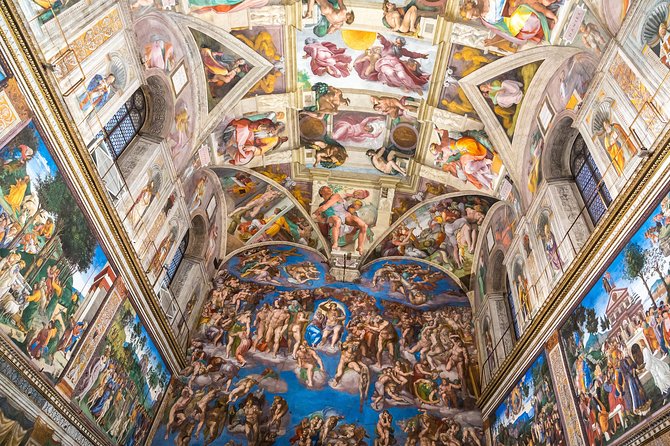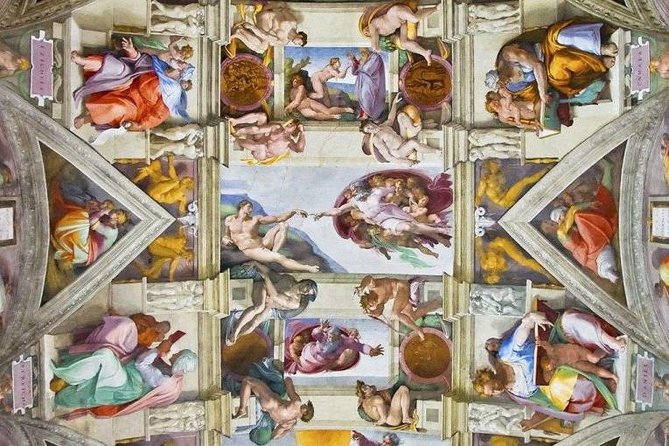Roma Trip Overview
VIP Colosseum 1 hour Skip-the-Line Small-Group official Colosseum tour.
-Enjoy a comprehensive overview of ancient Rome’s most important sites
-Beat the crowds and save time with skip-the-line Colosseum access
-A small group tour makes for a relaxing, personal way to explore
-Included audio headsets mean you won’t miss your guide’s stories
Meet your guide near the Colosseum, hear about the techniques of construction invented by the Romans, the incredible ability of the gladiators, the violent fighting between exotic animals and the high level of technology achieved by Roman engineers to build the Colosseum. Learn about the trapdoors and all the mechanisms used to animate the games. Your guide will keep you entertained with stories of sea-battles, the cages where lions were kept before the games started, the rooms in which gladiators were waiting before they reached the arena, the executions, and the excitement of the spectators attending the most spectacular games in human history.
Additional Info
Duration: 60 to 75 minutes
Starts: Roma, Italy
Trip Category: Cultural & Theme Tours >> Historical & Heritage Tours
Explore Roma Promoted Experiences
What to Expect When Visiting Roma, Lazio, Italy
VIP Colosseum 1 hour Skip-the-Line Small-Group official Colosseum tour.
-Enjoy a comprehensive overview of ancient Rome’s most important sites
-Beat the crowds and save time with skip-the-line Colosseum access
-A small group tour makes for a relaxing, personal way to explore
-Included audio headsets mean you won’t miss your guide’s stories
Meet your guide near the Colosseum, hear about the techniques of construction invented by the Romans, the incredible ability of the gladiators, the violent fighting between exotic animals and the high level of technology achieved by Roman engineers to build the Colosseum. Learn about the trapdoors and all the mechanisms used to animate the games. Your guide will keep you entertained with stories of sea-battles, the cages where lions were kept before the games started, the rooms in which gladiators were waiting before they reached the arena, the executions, and the excitement of the spectators attending the most spectacular games in human history.
Itinerary
This is a typical itinerary for this product
Stop At: Colosseum, Piazza del Colosseo, 00184 Rome Italy
Meet your guide and enjoy panoramic views of the best-preserved part of the Colosseum.
Your guide will entertain you with tales of sea battles, and tell you about the cages where the lions were kept. Imagine the roar of the crowd as their blood-lust was met. Continue to the 2nd tiers for the best views of the Colosseum, inside and out.
Called by the ancient Romans, “Anphitheatrum Flavlum” (Flavian Amphitheatre), the Colosseum is the most famous and impressive monument of ancient Rome, as well as the largest amphitheatre in the world.
The name is undoubtedly linked to the large size of the building but derives above all from the fact that nearby there was a colossal statue of Nero and bronze.
In 1990, the Colosseum, along with all the historical centre of Rome, the Vatican extraterritorial zones in Italy and the Basilica of St. Paul Outside the Walls, was listed as a World Heritage Site by UNESCO, while in July 2007 was included among the New seven Wonders of the World.
Duration: 1 hour
Pass By: Palatine Hill, Piazza Santa Maria Nova, 53, 00186 Rome Italy
The Palatine Hill, (/ˈpælətaɪn/; Latin: Collis Palatium or Mons Palatinus; Italian: Palatino [palaˈtiːno]) which is the centremost of the Seven Hills of Rome, is one of the most ancient parts of the city and has been called “the first nucleus of the Roman Empire.” The site is now mainly a large open-air museum while the Palatine Museum houses many finds from the excavations here and from other ancient Italian sites.
Imperial palaces were built here, starting with Augustus. Before imperial times the hill was mostly occupied by the houses of the rich.
The hill originally had two summits separated by depression; the highest part was called Palatium and the other Germalus (or Cermalus). Using the Forma Urbis its perimeter enclosed 63 acres (25 ha); while the Regional Catalogues of the 4th century enclose 131 acres (53 ha).
Pass By: Roman Forum, Largo della Salara Vecchia 5/6, 00186 Rome Italy
Roman Forum, Latin Forum Romanum, the most important forum in ancient Rome, is situated on low ground between the Palatine and Capitoline hills. The Roman Forum was the scene of public meetings, law courts, and gladiatorial combats in republican times and was lined with shops and open-air markets. Under the empire, when it primarily became a centre for religious and secular spectacles and ceremonies, it was the site of many of the city’s most imposing temples and monuments.
Among the structures surviving in whole or in part are the Temple of Castor and Pollux, the Temple of the Deified Caesar, the Mamertine Prison, the Curia (senate house), the Temple of Saturn, the Temple of Vesta, the Temple of Romulus, the Arch of Titus, the Arch of Septimius Severus, and the Cloaca Maxima.
Pass By: Arco di Costantino, Via di San Gregorio, 00186 Rome Italy
The Arch of Constantine is a triumphal arch in Rome dedicated to the emperor Constantine the Great. The arch was commissioned by the Roman Senate to commemorate Constantine’s victory over Maxentius at the Battle of Milvian Bridge in AD 312. Situated between the Colosseum and the Palatine Hill, the arch spans the Via Triumphalis, the route taken by victorious military leaders when they entered the city in a triumphal procession. Dedicated in 315, it is the largest Roman triumphal arch, with overall dimensions of 21 m (69 ft) high, 25.9 m (85 ft) wide and 7.4 m (24 ft) deep. It has three bays, the central one being 11.5 m (38 ft) high and 6.5 m (21 ft) wide and the laterals 7.4 m (24 ft) by 3.4 m (11 ft) each. The arch is constructed of brick-faced concrete riveted in marble.
Though dedicated to Constantine, much of the sculptural decoration consists of reliefs and statues removed from earlier triumphal monuments dedicated to Trajan (98–117), Hadrian (117–138) and Marcus Aurelius (161)






